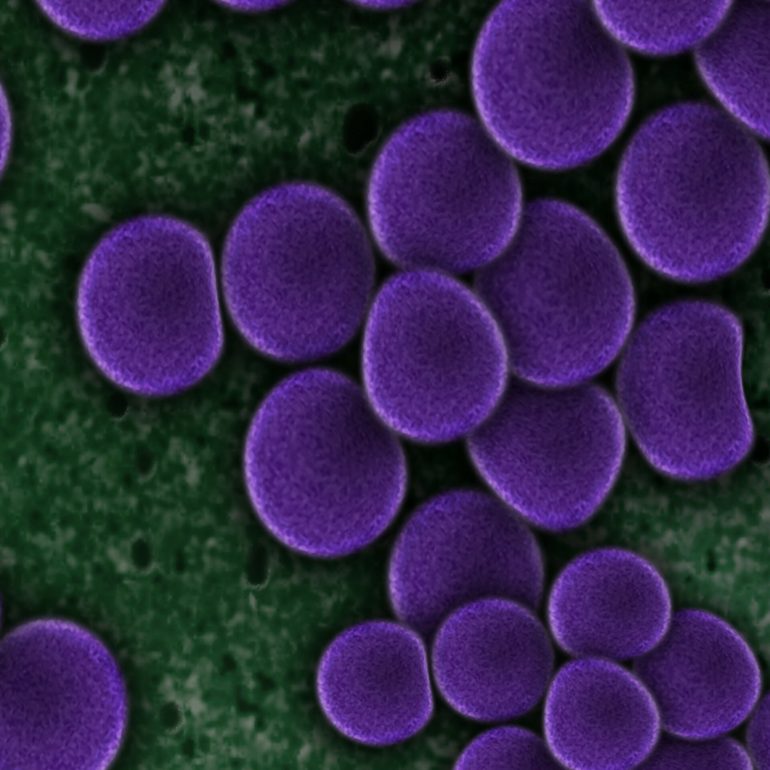A connective tissue protein known to support the framework of organs also encourages immune responses that fight bacterial infections, while restraining responses that can be deadly in the condition called sepsis, a new study finds.
Led by researchers from NYU Grossman School of Medicine, the work revolves around the extracellular matrix (ECM) of connective tissues, once thought of as an inert framework that shapes bodily compartments, but increasingly recognized as a signaling partner with nearby cells in normal function, and a contributor to disease when signals go awry. Among the key players in the ECM are fibroblasts, the cells that make tough structural matrix proteins like collagen.
Published online June 28 in the Proceedings of the National Academy of Sciences, the new analysis found that lumican, a protein-sugar combination (proteoglycan) secreted by fibroblasts, and known to partner with collagen in connective tissues, also promotes immune system responses in immune cells called macrophages that fight bacterial infections. At the same time, the study found that lumican protects tissues by restraining a different type of immune response that reacts to DNA, whether from an invading virus, or from human cells that spill their DNA as they die (a signal that tissues are under stress).
Such inflammatory responses represent as a transition into healing, but grow too big in sepsis, damaging the body’s own tissues to the point of organ failure. Sepsis affects 48.9 million people worldwide, the authors say, but the role of the ECM in the condition is largely unknown.
“Lumican may have a dual protective role in ECM tissues, promoting defense against bacteria on the one hand, and on the other, limiting immune overreactions to DNA that cause self-attack, or autoimmunity,” says corresponding study author Shukti Chakravarti, Ph.D., professor in the departments of Ophthalmology and Pathology at NYU Langone Health.
The findings suggest that connective tissue, and extracellular matrix proteins like lumican, operate outside of cells normally, but as disease or damage break down ECM, get sucked into and regulate immune cells homing in on the damage.
Maintaining the Balance
Lumican happens to interact with two proteins on surfaces of immune cells that control the activity of proteins called toll-like receptors known to recognize structural patterns common to molecules made by invading microbes, say the study authors. Because they are less specific than other parts of the immune system, toll-like receptors can also cause attacks by immune cells on the body’s own tissues if over-activated.
The current study authors found that lumican promotes the ability of toll-like receptor (TLR)-4 on the surfaces of immune cells to recognize bacterial cell-wall toxins called lipopolysaccharides (LPS). Specifically, the study found that lumican, by attaching to two proteins, CD14 and Caveolin1, likely using regions normally covered by collagen, stabilizes their interactions with TLR4 to increase its ability to react to LPS. This in turn leads to production of TNF alpha, a signaling protein that amplifies immune responses.
Along with describing the effect of lumican on the surfaces of immune cells, the new study finds that lumican is taken up from outside cells into membrane-bound pouches called endosomes, and pulled into cells. Such compartments deliver ingested bacteria to other endosomes that destroy them, or heighten inflammation or protective interferon responses. Once pulled inside, the researchers found, lumican bolstered TLR4 activity by slowing down its passage into lysosomes, pockets where such proteins are broken down and recycled.
While it encouraged TLR4 activity on cell surfaces, lumican, once inside immune cells, had the opposite effect on toll-like receptor 9 (TLR9), which is known react to DNA instead of bacterial LPS. Experiments showed that lumican’s binding of DNA in endosomes keeps it away from, and prevents it from activating, TLR9.
Experiments confirmed that mice engineered to lack the gene for lumican have trouble both fighting off bacterial infections (less cytokine response, slower clearance, greater weight loss), and trouble restraining the immune overreaction to bacteria (sepsis). The study authors also found elevated lumican levels in human sepsis patients’ blood plasma, and that human immune cells (blood monocytes) treated with lumican had elevated TLR4 activity, but suppressed TLR9 responses.
“As an influencer of both processes, lumican-based peptides could be used as a lever, to tweak inflammation related to TNF-alpha, or endosomal interferon responses, to better resolve inflammation and infections,” says George Maiti, Ph.D., a post-doctoral fellow in Chakravarti’s lab. “Our results argue for a new role for ECM proteins at sites of injury. Taken up by incoming immune cells it shapes immune responses beyond the cell surface by regulating the movement and interaction of endosomal receptors and signaling partners,” says
The molecular underpinnings of immune cell migration
More information:
George Maiti el al., “Matrix lumican endocytosed by immune cells controls receptor ligand trafficking to promote TLR4 and restrict TLR9 in sepsis,” PNAS (2021). www.pnas.org/cgi/doi/10.1073/pnas.2100999118
Provided by
NYU Langone Health
Citation:
Connective tissue protein fights bacterial infection (2021, June 28)
retrieved 28 June 2021
from https://medicalxpress.com/news/2021-06-tissue-protein-bacterial-infection.html
This document is subject to copyright. Apart from any fair dealing for the purpose of private study or research, no
part may be reproduced without the written permission. The content is provided for information purposes only.



